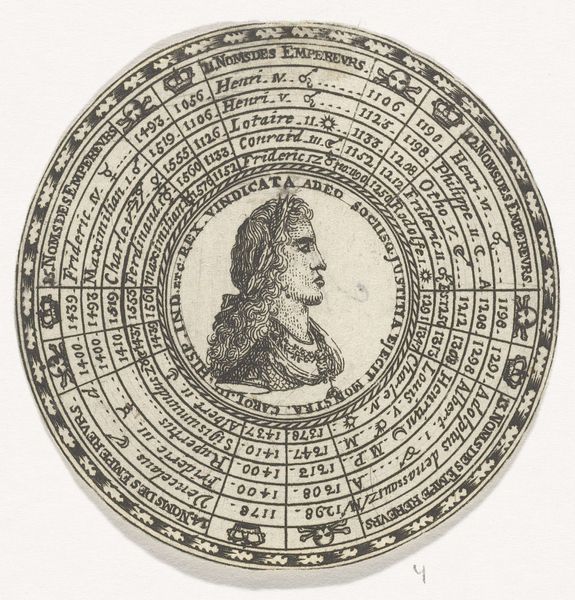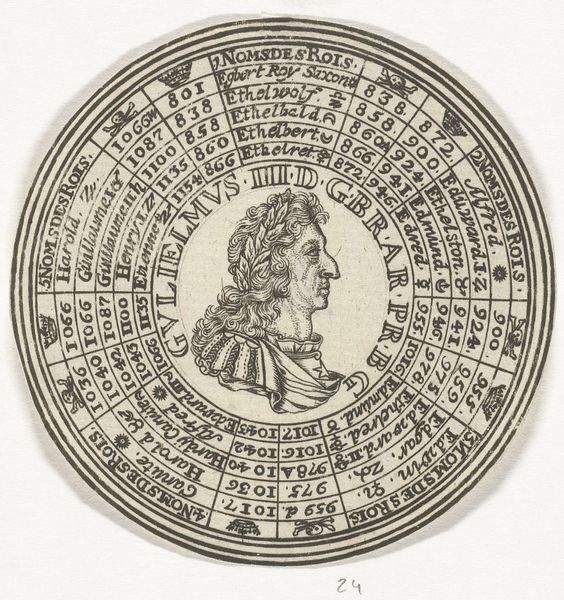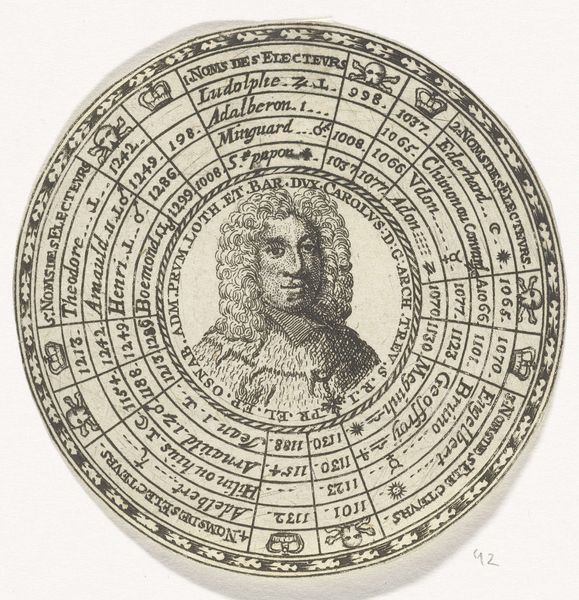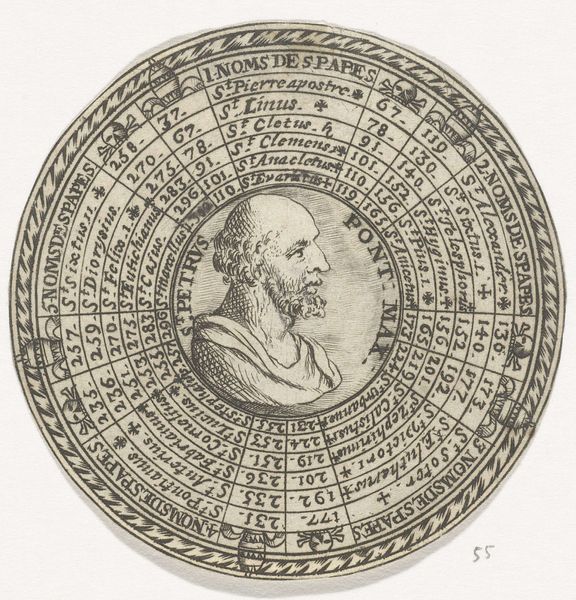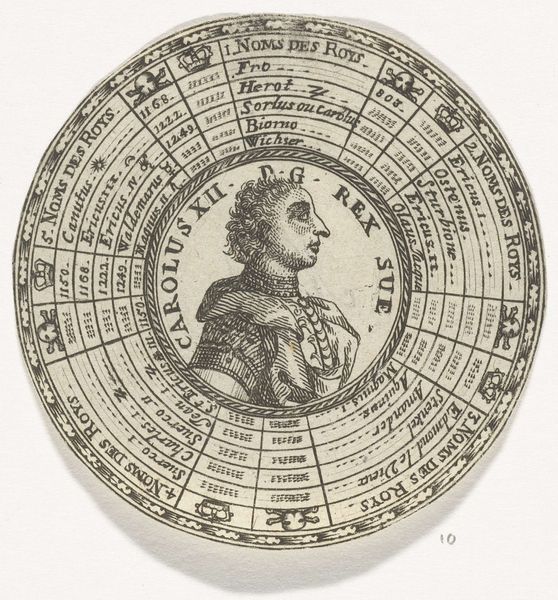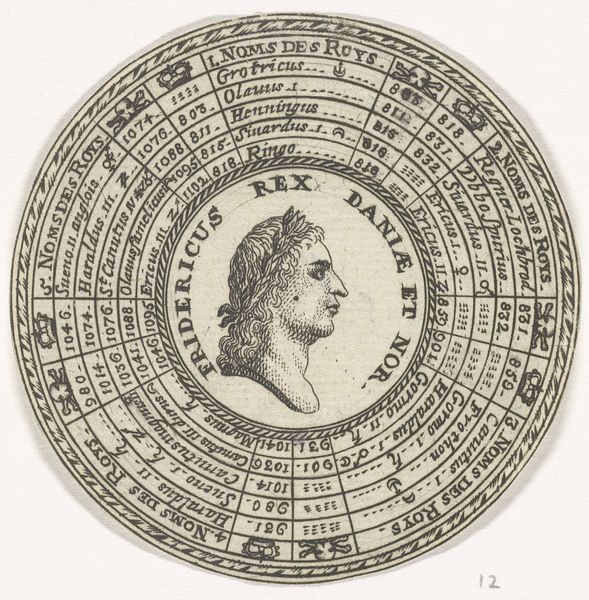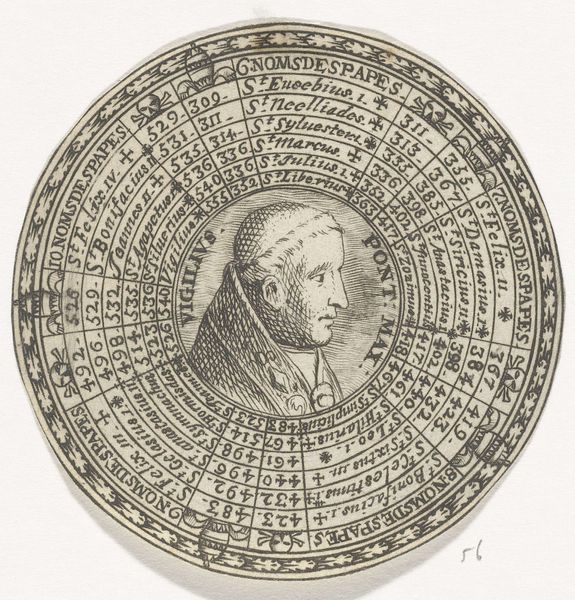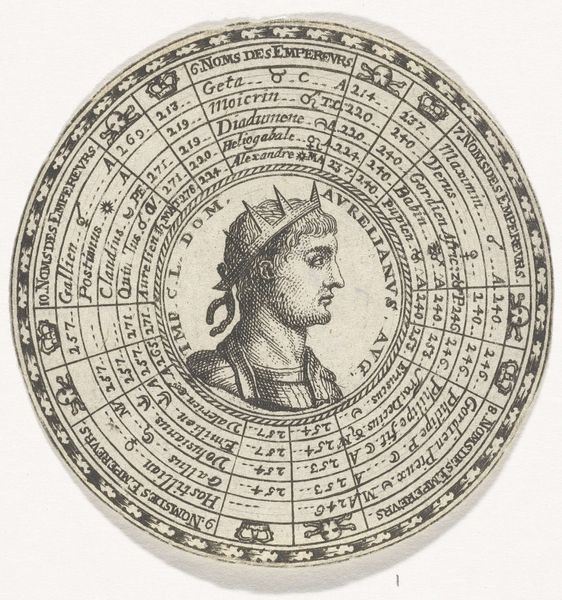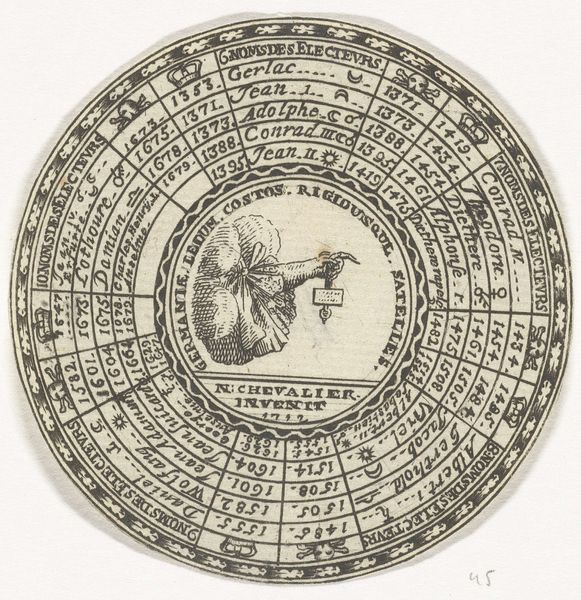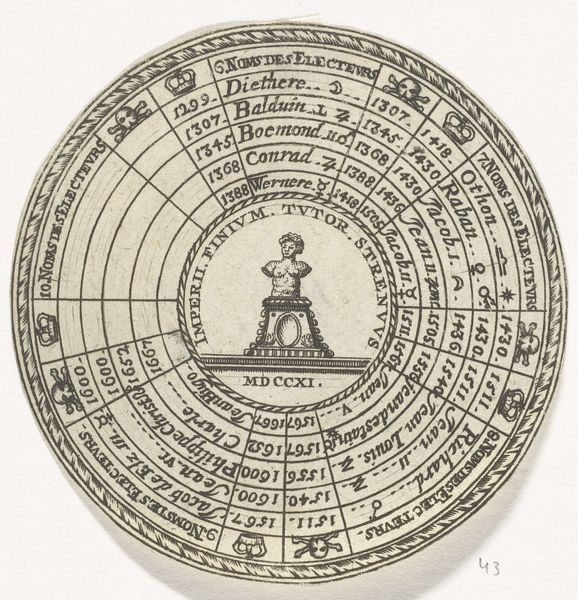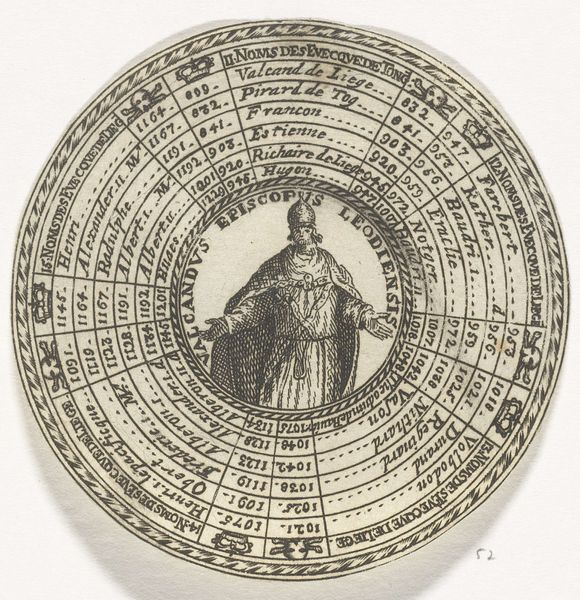
Penning met het portret van Dirk VII en de namen van de graven van Holland 1685 - 1720
0:00
0:00
engraving
#
portrait
#
medieval
#
old engraving style
#
pen-ink sketch
#
limited contrast and shading
#
pen work
#
engraving
Copyright: Rijks Museum: Open Domain
Curator: Here we have an engraving dating from the late 17th to early 18th century. It's titled "Penning met het portret van Dirk VII en de namen van de graven van Holland," featuring Dirk VII. Editor: It strikes me immediately as something of a cultural artifact, beyond its aesthetic value. A face encircled by names – almost like a regal family tree frozen in ink. I sense a deep preoccupation with lineage and historical continuity. Curator: Exactly. The means of production here—engraving—allowed for relatively widespread distribution of these commemorative or didactic objects. The controlled lines and precise lettering point to the skill and labor involved, emphasizing the coin or medal format, a popular way to mass-produce and distribute iconic representations. Editor: And the symbolism reinforces that. The portrait sits centrally, anchoring all these names, connecting them, perhaps legitimizing them. There's something circular and almost incantatory in how the names spiral around him with small symbols beside them. The circular format suggests cycles of power, the recurrent nature of history perhaps? Curator: Possibly, but the deliberate ordering of these names is what gets me thinking about how it functions in relation to specific audiences. The work might engage with anxieties about succession or challenge interpretations about claims of inheritance prevalent within specific social circles. Editor: A fascinating observation. Looking at this now, it strikes me how those crown icons mark those rulers with great relevance or succession highlights. It creates an alternative emphasis, guiding the viewer through a curated historical narrative. And notice those other tiny, almost skeletal figures amongst the listed names? Macabre additions. Curator: Yes! And these repetitive forms highlight that even printed ‘art’ had material limits. The etching likely originated to record, distribute, or possibly shape, narratives about lineage to legitimize claims during specific periods. The texture comes from the marks of the burin on the metal plate – which, when inked and pressed, produce this work of reproducible authority. Editor: Looking again, what resonated initially as solemn now carries the weight of constructed legacy, etched carefully into material form, making history a commodity of sorts. Curator: Precisely, and recognizing this changes how we interpret the historical document. Editor: Indeed. Now, I view it with fresh eyes—a meticulously constructed statement about history and power.
Comments
No comments
Be the first to comment and join the conversation on the ultimate creative platform.
